7-(2,2-DIMETHYL-5-OXO-4-PHENYL-IMIDAZOLIDIN-1-YL)-3,3-DIMETHYL-6-OXO-2-THIA-5-AZABICYCLO[3.2.0]HEPTANE-4-CARBOXYLIC ACID
- CAS NO.:3511-16-8
- Empirical Formula: C19H23N3O4S
- Molecular Weight: 389.47
- MDL number: MFCD00056861
- EINECS: 222-512-5
- SAFETY DATA SHEET (SDS)
- Update Date: 2024-11-19 20:33:22
![7-(2,2-DIMETHYL-5-OXO-4-PHENYL-IMIDAZOLIDIN-1-YL)-3,3-DIMETHYL-6-OXO-2-THIA-5-AZABICYCLO[3.2.0]HEPTANE-4-CARBOXYLIC ACID Structural](https://img.chemicalbook.in/CAS/GIF/3511-16-8.gif)
What is 7-(2,2-DIMETHYL-5-OXO-4-PHENYL-IMIDAZOLIDIN-1-YL)-3,3-DIMETHYL-6-OXO-2-THIA-5-AZABICYCLO[3.2.0]HEPTANE-4-CARBOXYLIC ACID?
Description
Hetacillin was synthesized by Bristol-Myers Laboratories in 1964. It shows activity as strong as that of ampicillin against a variety of gram-positive and gram-negative bacteria. Hetacillin shows almost the same pharmacokinetic properties as ampicillin when administered orally and a later serum peak when given by intramuscular administration. When administered either orally or intramuscularly, it is hydrolyzed in vivo into ampicillin. Therefore, the clinical applications of hetacillin are the same as those of ampicillin.
Originator
Natacillin,Bristol Banyu,Japan,1970
The Uses of 7-(2,2-DIMETHYL-5-OXO-4-PHENYL-IMIDAZOLIDIN-1-YL)-3,3-DIMETHYL-6-OXO-2-THIA-5-AZABICYCLO[3.2.0]HEPTANE-4-CARBOXYLIC ACID
Antibacterial.
The Uses of 7-(2,2-DIMETHYL-5-OXO-4-PHENYL-IMIDAZOLIDIN-1-YL)-3,3-DIMETHYL-6-OXO-2-THIA-5-AZABICYCLO[3.2.0]HEPTANE-4-CARBOXYLIC ACID
Hetacillin is a β-lactam antibiotic.
Background
Hetacillin is a penicillin beta-lactam antibiotic used in the treatment of bacterial infections caused by susceptible, usually gram-positive, organisms. The name "penicillin" can either refer to several variants of penicillin available, or to the group of antibiotics derived from the penicillins. Hetacillin has in vitro activity against gram-positive and gram-negative aerobic and anaerobic bacteria. The bactericidal activity of Hetacillin results from the inhibition of cell wall synthesis and is mediated through Hetacillin binding to penicillin binding proteins (PBPs). Hetacillin has been withdrawn from the market since it has been discovered that it has no therapeutic advantage compared to non-ester derivatives like ampicillin.
Indications
Hetacillin is a beta-lactam antibiotic prodrug used to treat bacterial infections. In the body it gets converted to ampicillin.
Definition
ChEBI: Hetacillin is a penicillin. It has a role as an antibacterial drug. It is a conjugate acid of a hetacillin(1-).
Manufacturing Process
To 100 grams of α-aminobenzylpenicillin slurried in 2,500 ml of acetone is added 200 ml of a 22% solution of potassium ethylhexanoate in dry n-butanol and the mixture is warmed to 45°C whereupon the acid dissolves. After the mixture is agitated for 1 hour at 40° to 45°C, the product begins to crystallize out. Agitation is continued for 4 hours at 45°C after which the product, the potassium salt of hetacillin, is collected by filtration, washed with 500 ml of dry acetone, dried for 17 hours at 40°C and found to weigh 70.0 grams.
brand name
Versapen-K (Bristol-Myers Squibb) .
Therapeutic Function
Antibacterial
Pharmacokinetics
Hetacillin is a penicillin beta-lactam antibiotic used in the treatment of bacterial infections caused by susceptible, usually gram-positive, organisms. The name "penicillin" can either refer to several variants of penicillin available, or to the group of antibiotics derived from the penicillins. Hetacillin has in vitro activity against gram-positive and gram-negative aerobic and anaerobic bacteria. The bactericidal activity of Hetacillin results from the inhibition of cell wall synthesis and is mediated through Hetacillin binding to penicillin binding proteins (PBPs).
Metabolism
Hydrolyzed to active ampicillin via esterases
Properties of 7-(2,2-DIMETHYL-5-OXO-4-PHENYL-IMIDAZOLIDIN-1-YL)-3,3-DIMETHYL-6-OXO-2-THIA-5-AZABICYCLO[3.2.0]HEPTANE-4-CARBOXYLIC ACID
| Melting point: | 189.2-191.0° |
| Boiling point: | 648.4±55.0 °C(Predicted) |
| alpha | D25 +366° (pyridine) |
| Density | 1.43±0.1 g/cm3(Predicted) |
| storage temp. | Hygroscopic, -20°C Freezer, Under inert atmosphere |
| solubility | DMSO (Slightly), Methanol (Slightly), Pyridine (Slightly) |
| form | Solid |
| pka | 2.45±0.50(Predicted) |
| color | White to Off-White |
| Stability: | Hygroscopic, Unstable in Solution |
Safety information for 7-(2,2-DIMETHYL-5-OXO-4-PHENYL-IMIDAZOLIDIN-1-YL)-3,3-DIMETHYL-6-OXO-2-THIA-5-AZABICYCLO[3.2.0]HEPTANE-4-CARBOXYLIC ACID
Computed Descriptors for 7-(2,2-DIMETHYL-5-OXO-4-PHENYL-IMIDAZOLIDIN-1-YL)-3,3-DIMETHYL-6-OXO-2-THIA-5-AZABICYCLO[3.2.0]HEPTANE-4-CARBOXYLIC ACID
New Products
(S)-3-Aminobutanenitrile hydrochloride 4-Methylphenylacetic acid N-Boc-D-alaninol N-BOC-D/L-ALANINOL Tert-butyl bis(2-chloroethyl)carbamate 3-Morpholino-1-(4-nitrophenyl)-5,6-dihydropyridin- 2(1H)-one Furan-2,5-Dicarboxylic Acid Tropic acid 1-Bromo-3,5-Di-Tert-Butylbenzene S-2-CHLORO PROPIONIC ACID ETHYL ISOCYANOACETATE 2-Bromo-1,3-Bis(Dimethylamino)Trimethinium Hexafluorophosphate 4-IODO BENZOIC ACID 3-NITRO-2-METHYL ANILINE 1-(2,4-DICHLOROPHENYL) ETHANAMINE (2-Hydroxyphenyl)acetonitrile 4-Bromopyrazole 2-(Cyanocyclohexyl)acetic acid 4-methoxy-3,5-dinitropyridine 1-(4-(aminomethyl)benzyl)urea hydrochloride 2-aminopropyl benzoate hydrochloride diethyl 2-(2-((tertbutoxycarbonyl)amino) ethyl)malonate tert-butyl 4- (ureidomethyl)benzylcarbamate Ethyl-2-chloro((4-methoxyphenyl)hydrazono)acetateRelated products of tetrahydrofuran
![2-AMINO-3-[METHYLTHIO]BUTYRIC ACID](https://img.chemicalbook.in/CAS/GIF/443-80-1.gif)
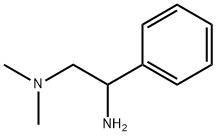

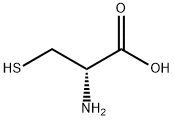
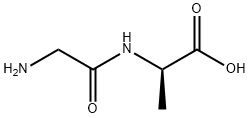

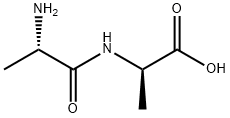
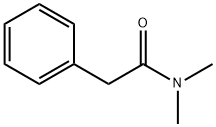
You may like
-
 2033-24-1 98%View Details
2033-24-1 98%View Details
2033-24-1 -
 42831-50-5 5-METHYLISOXAZOLE-4-CARBOXYLIC ACID 98%View Details
42831-50-5 5-METHYLISOXAZOLE-4-CARBOXYLIC ACID 98%View Details
42831-50-5 -
 1975-50-4 98%View Details
1975-50-4 98%View Details
1975-50-4 -
 2-HYDROXY BENZYL ALCOHOL 98%View Details
2-HYDROXY BENZYL ALCOHOL 98%View Details
90-01-7 -
 2-Chloro-1,3-Bis(Dimethylamino)Trimethinium Hexafluorophosphate 221615-75-4 98%View Details
2-Chloro-1,3-Bis(Dimethylamino)Trimethinium Hexafluorophosphate 221615-75-4 98%View Details
221615-75-4 -
 61397-56-6 CIS BROMO BENZOATE 98%View Details
61397-56-6 CIS BROMO BENZOATE 98%View Details
61397-56-6 -
 14714-50-2 (2-Hydroxyphenyl)acetonitrile 98+View Details
14714-50-2 (2-Hydroxyphenyl)acetonitrile 98+View Details
14714-50-2 -
 118753-70-1 98+View Details
118753-70-1 98+View Details
118753-70-1